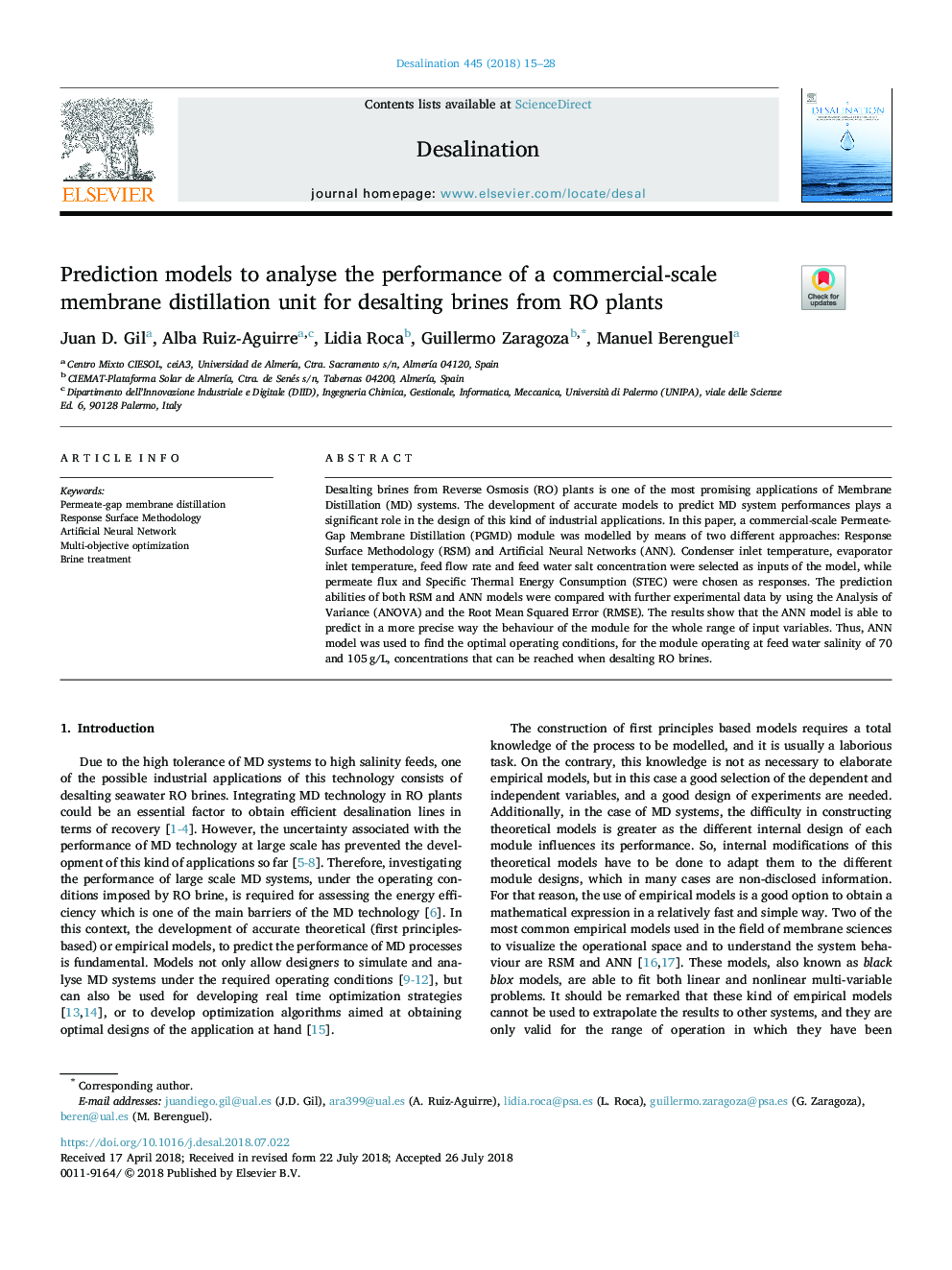| Article ID | Journal | Published Year | Pages | File Type |
|---|---|---|---|---|
| 7007606 | Desalination | 2018 | 14 Pages |
Abstract
Desalting brines from Reverse Osmosis (RO) plants is one of the most promising applications of Membrane Distillation (MD) systems. The development of accurate models to predict MD system performances plays a significant role in the design of this kind of industrial applications. In this paper, a commercial-scale Permeate-Gap Membrane Distillation (PGMD) module was modelled by means of two different approaches: Response Surface Methodology (RSM) and Artificial Neural Networks (ANN). Condenser inlet temperature, evaporator inlet temperature, feed flow rate and feed water salt concentration were selected as inputs of the model, while permeate flux and Specific Thermal Energy Consumption (STEC) were chosen as responses. The prediction abilities of both RSM and ANN models were compared with further experimental data by using the Analysis of Variance (ANOVA) and the Root Mean Squared Error (RMSE). The results show that the ANN model is able to predict in a more precise way the behaviour of the module for the whole range of input variables. Thus, ANN model was used to find the optimal operating conditions, for the module operating at feed water salinity of 70 and 105â¯g/L, concentrations that can be reached when desalting RO brines.
Keywords
Related Topics
Physical Sciences and Engineering
Chemical Engineering
Filtration and Separation
Authors
Juan D. Gil, Alba Ruiz-Aguirre, Lidia Roca, Guillermo Zaragoza, Manuel Berenguel,
